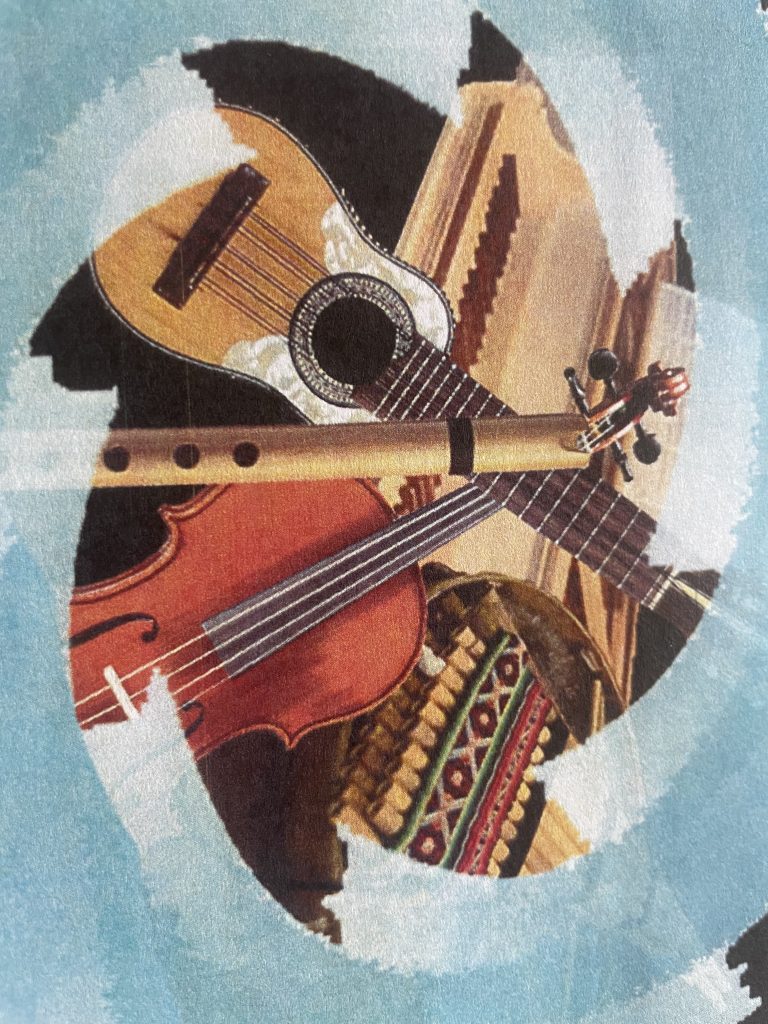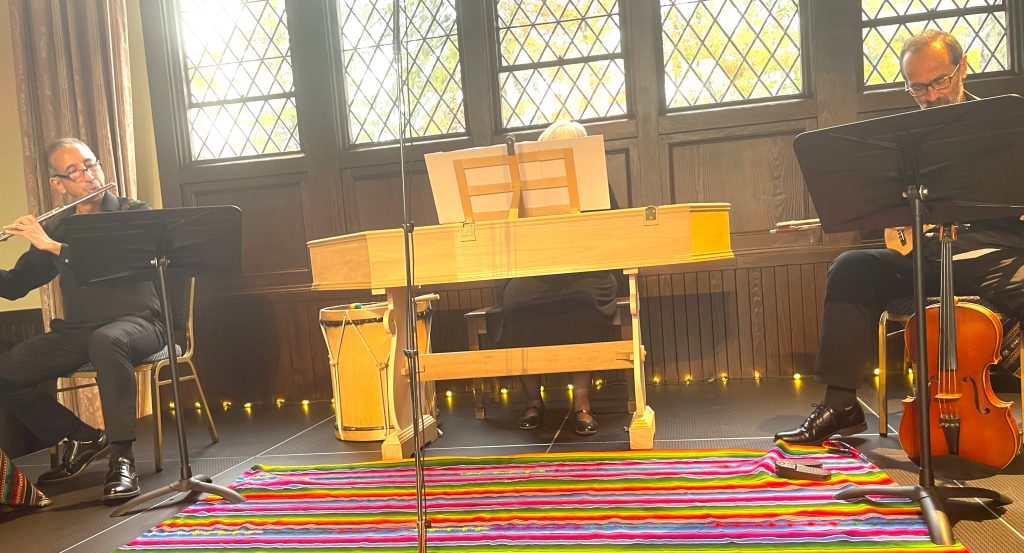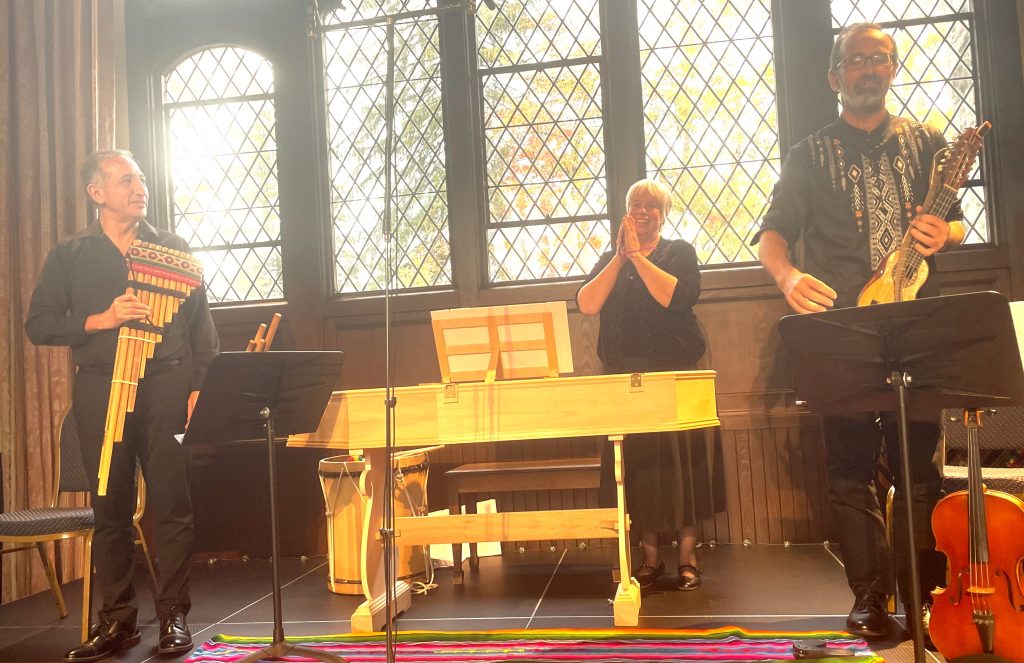
by Kevin T McEneaney
Last Saturday at Saint James Place in Great Barrington, Christine Gevert showcased elements of Latin American music with indigenous origins. Gevert played a virginal keyboard and bombo (indigenous drum), accompanied by Gonzalo Cortés on flute, quena (indigenous flute), and zampoña (an indigenous pan flute), along with Carlos Boltes on viola and charango (indigenous guitar). All titles were in Spanish; most of the music was from Chile.
Indigenous instrumental music in South America was similar to Chinese music in that the principal subject of the music was the natural landscape (also a dominant theme in classical Romantic music). During the Spanish conquest, soldiers would search any cabins and tents for native musical instruments. If an instrument was discovered, the instrument and its owner would be eliminated because melodies might contain rebellious sentiment.

The trio opened with “Ventolera” (Wind Gust), which energetically portrayed the changing rhythms of winds from a mountainous Andean landscape. The charango strumming was fierce! “Ojito de Agua” (Little Eye of Water) described walking around a beautiful lake; its charming aesthetic impact was effectively communicated by the quena. “Sipassy” by a contemporary ensemble in Chile evoked the wonder of mountain views. “Zamba y Chacarera simple” by the Argentinian Estaban D’Antona (b. 1973) featured an entrancing Quaker melody transferred into an Argentine zamba style.
The middle section of the concert featured a Tribute to Violetta Parra from Chile. Violetta Parra was an extraordinary composer and collector of indigenous music. She travelled all around South America, recording native music by manual notation. Two evocative, contemporary tribute numbers were performed, plus Parra’s “Tocata y Fuga” (1965) fused elements of indigenous music with classical music. Here, Christine Gevert was impressively effective on bombo drum.
Two movements from “Si ya aqeulla nave” by Manuel de Zumaya were performed. This was a classical music composition that was previously thought to be the first classical composition written in Mexico, yet that theory has recently been disproven. The flute line in this work was extremely attractive.
“En la Era del Antropecene“ (2025) was another composition by Esteban D’Antona. This modern milonga (4/4, 2/3 rhythm) was written during the COVID pandemic when collective isolation appeared to imitate early human history. The viola under Boltes delivered unusual crusty and simultaneously transcendent tones that were astonishing.
The finale was “Vientos del Sur” (Winds of the South) by a contemporary ensemble from Bolivia. Cortés played the large double zampoña with impressive eloquence. The indigenous theme of landscape still resonates in popular contemporary South American music, as it once did centuries ago. In this concert, past and present intermingled as a universal continuum.
